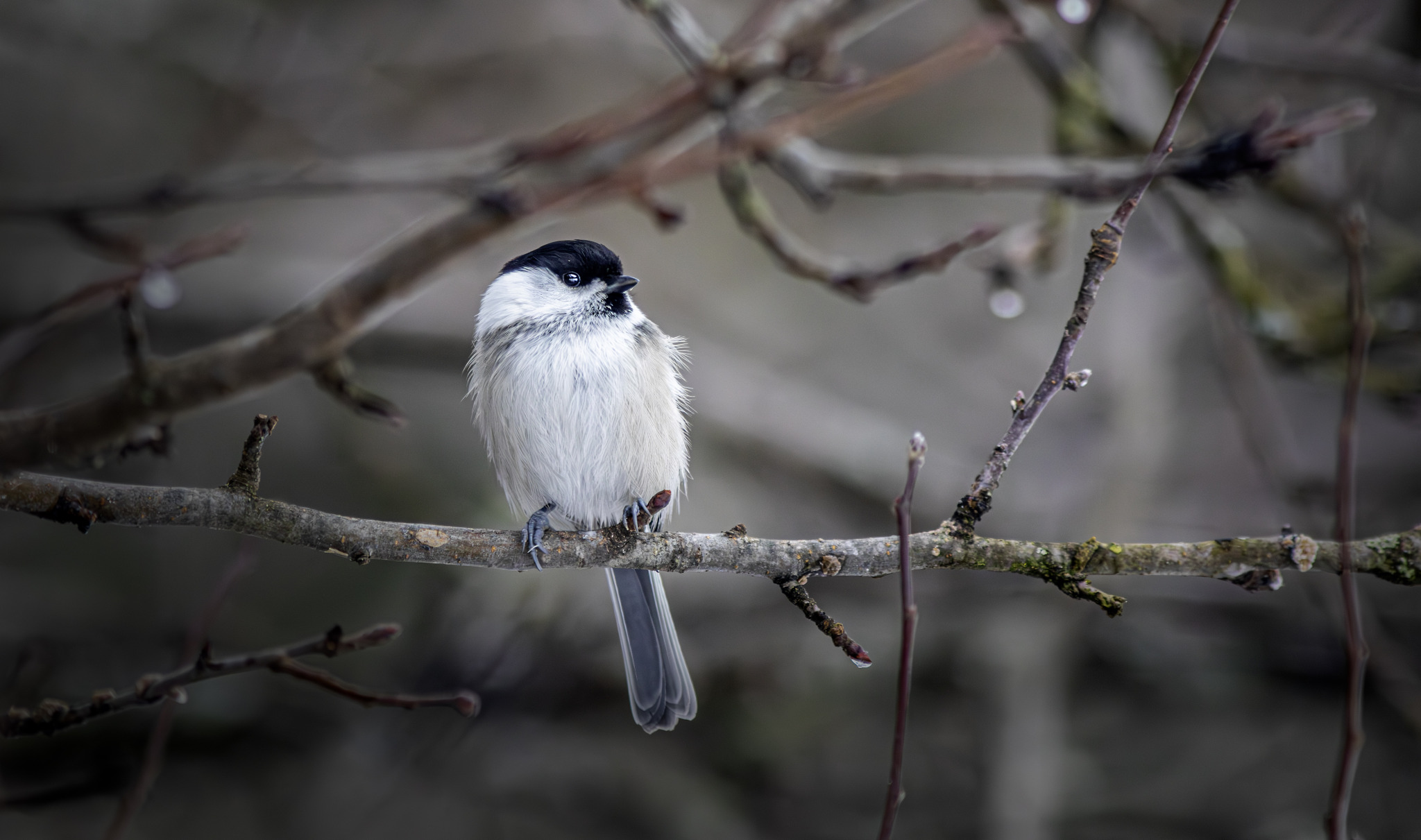The Willow Tit (Poecile montanus), a small yet charismatic bird, enchants observers with its subtle charm and distinct characteristics. This avian species, native to Europe and parts of Asia, belongs to the tit family and is renowned for its intricate plumage and lively behavior.
Measuring approximately 11 to 12 centimeters in length, the Willow Tit sports a distinctive black cap that extends down to its nape, contrasting sharply with its white cheeks and underparts. Its back displays a rich chestnut hue, adding warmth to its overall appearance. A distinguishing feature is its white wing bars, which accentuate its wings as it flits through the branches.
Habitually found in damp woodlands, marshes, and riparian habitats, the Willow Tit prefers areas abundant in willow trees, alders, and other shrubs. Its habitat choice is reflected in its name, as willow trees are a favored location for nesting and foraging.
Despite its diminutive size, the Willow Tit possesses a powerful and melodious song that resonates through its woodland domain. Its call, a series of clear, whistling notes interspersed with trills, adds to the symphony of birdlife in its environment, signaling its presence to attentive listeners.
The Willow Tit’s diet consists primarily of insects, seeds, and berries, which it skillfully forages for among the foliage and undergrowth. Its agile movements and inquisitive nature make it a delightful sight to observe as it navigates its woodland habitat with agility and determination.
During the breeding season, Willow Tits construct intricate nests within cavities of trees or abandoned burrows, lining them with moss, feathers, and other soft materials. Mated pairs engage in elaborate courtship rituals, strengthening their bonds as they prepare to raise their brood.
Despite facing challenges such as habitat loss and competition from other bird species, conservation efforts strive to safeguard the Willow Tit and its natural habitat. As an integral part of its ecosystem, this charming bird serves as a symbol of resilience and adaptability, reminding us of the importance of preserving biodiversity for future generations to appreciate and cherish.
Views: 51
Subscribe to the newsletter:
